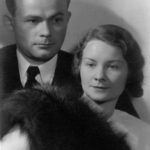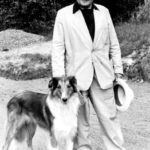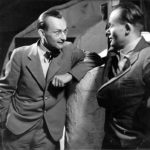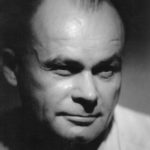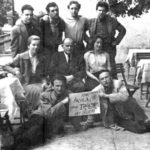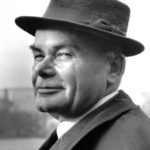František Tröster - CV
 Born - December 20th, 1904
Born - December 20th, 1904
Died - December 14th, 1968 in Prague.
World-renowned artist, stage and exhibition designer, professor, architect.
In 1968 he received title of National Artist for his lifelong work.
1924: GE examination and Diploma from Real Secondary School in Roudnice.
1920 -1924: During his studies at secondary school, he designs scenes for amateur theatre association in Roudnice.
1924/25 - 1927/28: Studies architecture and terrestrial engineering at university in Prague.
1928-1931: Studies architecture with Professor P. Janak at the Industrial Arts Faculty in Prague. Studies urbanisation during his educationalstays in Paris, France and Algiers, Africa.
1934: External pedagogue at the State Industrial School in Brno.
1934-1938: Professor at the School of Artistic Trades in Bratislava, where he headed the window-dressing department.
1939-1943: Professor at the Central School of Housing Industry in Prague.
From 1943: Teaches stage design at the Drama Department of the State Conservatory in Prague.
1946: Establishes the Institute of Stage Design in the Theatre Faculty at the Academy of fine arts (DAMU) in Prague.
1948-1968: Heads Institute of Stage Design at Prague DAMU (in 1956 he was nominated as its full professor).
More details >>
1920-1924: During his studies at secondary school, he was already creating Stage designs for the amateur theatre club Halek in Roudnice.
From 1934: Regularly works with the Slovak National Theatre, the National Theatre in Prague and with several other Czechoslovak and international theatres.
The first Staging at the Slovak National Theatre is Periphery (1934) in a V. Sulc production. Further performances for the Slovak National Theatre are for example: Winter Fairytale (1935), Fidelio (1936), Tartuffe (1936), White Illness (1937).
In 1935 F. Troster begins a partnership with producer George Frejka, with whom he created many performances, both before and after the Second World War. Their mutual co-operation begins with a performance Rebellion in the Village (1935) for the National Theatre in Prague. The productions of George Frejka for the National Theatre are legendary performances in the pre-war period, e.g. Public Enemy (1935), Julius Caesar (1936), Auditor (1936), Boris Godunov (1937), How Do You Like (1937), Spellbound Life (1937), Romeo and Juliet (1938) and Falkenstein (1938).
During the Second World War, he co-operates with different producers for several different theatres. He also created the Stage design for ballet performances of Paul Borkovec Satyr and Ratcatcher (1942, V. Kaslik production). Both performances were prohibited by the occupational authorities for their anti-fascist interpretation.
In 1944 F. Troster was designated as "degenerate artist and a displaced person" by the occupational authorities. He was forced to leave the theatre, so painters F. Tichy and J. Broz signed some of his works for theatre.
After the Second World War F. Troster works for different theatres in Czechoslovakia and in foreign countries. Inspired by the fundamental principles of pre-war Stage design he amplifies them. Resumes co-operation with producer George Frejka - joint performances: Healthy Sick (1946), Singing Venice (1946), Navigator Theseus (1946), Kata Kabanova (1947), Dream Night of St. John (1947), Boris Godunov (1949), Merry Wives of Windsor (1949), The Marriage of Figaro (1950), Hide-and-seek on Stairs (1952). He mostly works for the Vinohrady Theatre.
Simultaneously with his abundant, creative activities for theatres, F. Troster was also very active as a professor at the Institute of Stage Design at DAMU.
<< Less

F. Troster also engaged in illustration activities - for example his illustrations in Seven Stories from F. Haller. Furthermore, he creatively designed a quantity of book covers (the cover of F. Kozik's book: Shakespeare [1940], Z. Tetauer: The Bull Sign [1943] and M. V. Kratochvil's book: Lonesome Brawler [1945]).
Aside from his Stage designs, exhibitions, illustrations and professorial works and activities, F. Troster also enjoyed painting pictures.
František Tröster in the Czech National Theatre archive >>.

